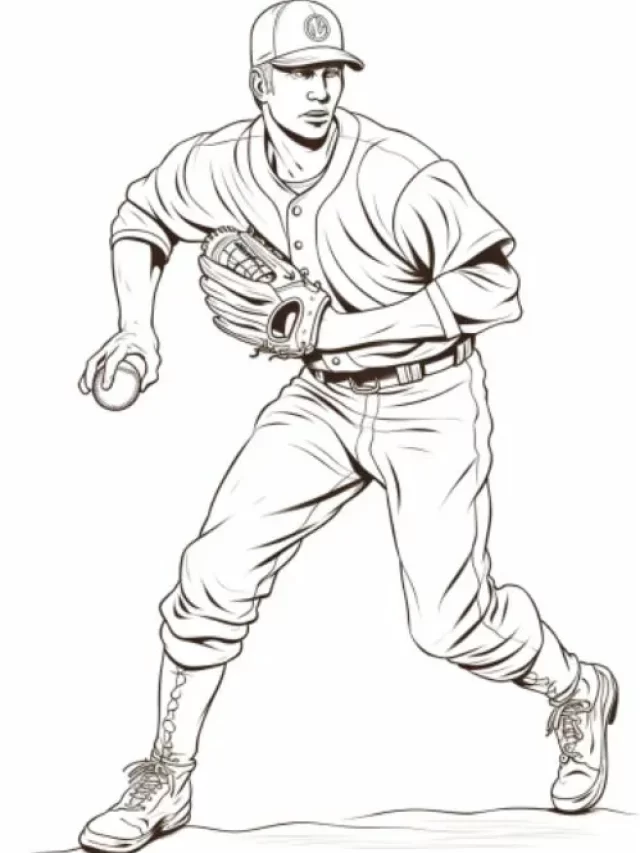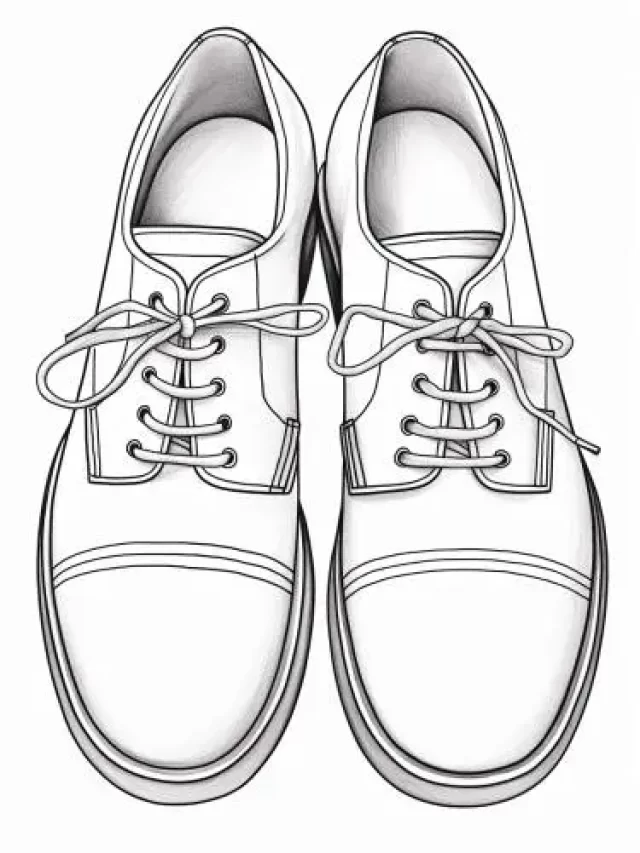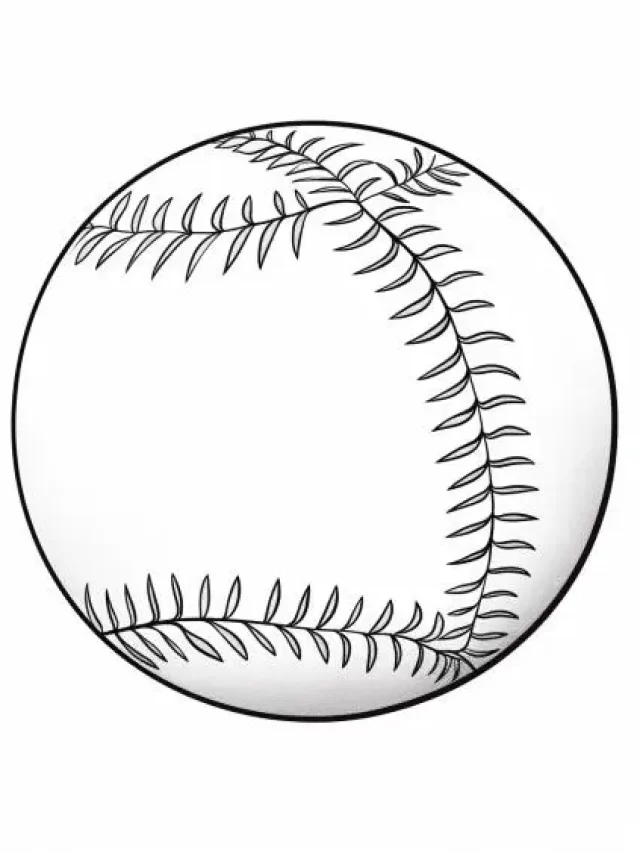
Wrist taping has become a common practice among baseball players, serving various purposes on the field. In this guide, we’ll delve into why wrist taping is prevalent in baseball and explore its associated benefits and potential drawbacks.
In the dynamic and physically demanding environment of baseball, where players engage in repetitive throwing, swinging, and catching motions, wrist injuries are not uncommon. To mitigate the risk of such injuries and enhance performance, many players turn to wrist taping as a preventive measure and a means of support.
While wrist taping offers several advantages, it’s essential to acknowledge the potential drawbacks associated with this practice. By understanding both the benefits and limitations of wrist taping, players can make informed decisions about incorporating it into their routine.
Throughout this guide, we’ll explore the various facets of wrist taping in baseball, providing valuable insights into its utility and considerations for players seeking to optimize their performance and minimize the risk of injury. Let’s dive in.
Also Read: How to Read a Baseball Scoreboard
Benefits of Wrist Taping
Wrist taping in baseball offers a range of benefits that contribute to player performance and well-being:
Injury Prevention: Taping serves as a crucial tool in preventing wrist injuries by providing additional support and stability. It helps players maintain proper wrist alignment during the repetitive motions inherent in baseball, such as throwing, swinging, and catching. By minimizing excessive movement and stress on the wrist joint, taping can reduce the risk of strains, sprains, and other injuries, particularly for players with a history of wrist issues.
Pain Relief: For players experiencing wrist discomfort or inflammation, taping can offer relief and aid in managing pain. The supportive nature of taping helps alleviate strain on the wrist muscles and ligaments, promoting comfort and facilitating optimal performance on the field. By providing targeted compression and support, taping can help players focus on their game without being hindered by discomfort or pain.
Improved Proprioception: Proprioception, or the body’s awareness of its position and movement in space, plays a vital role in baseball performance. Wrist taping can enhance proprioceptive feedback by providing sensory input to the muscles and joints. This heightened awareness enables players to better control their wrist movements, resulting in improved accuracy, coordination, and overall performance on the field.
By leveraging these benefits, baseball players can optimize their performance while minimizing the risk of wrist-related injuries. Wrist taping serves as a valuable tool in enhancing player safety, comfort, and performance, contributing to a more enjoyable and successful baseball experience.
Psychological Benefits
Beyond its physical advantages, wrist taping in baseball can yield significant psychological benefits, enhancing players’ mental fortitude and performance:
Boosting Confidence and Focus: Taping the wrists can serve as a psychological anchor for players, instilling a sense of confidence and focus on the field. Many players attribute their enhanced performance to the ritualistic act of taping, believing it provides them with a mental edge during gameplay. By feeling more secure and prepared with their wrists taped, players can approach each play with heightened confidence, leading to improved focus, decision-making, and overall performance.
Incorporating Taping into Pre-Game Rituals: For numerous baseball players, taping their wrists has become an integral part of their pre-game rituals. Establishing a consistent routine that includes wrist taping can help players mentally prepare for the challenges ahead, fostering a sense of readiness and familiarity. By incorporating taping into their pre-game rituals, players create a sense of comfort and control over their performance, helping them enter the game with a clear and focused mindset.
By recognizing the psychological benefits of wrist taping, players can harness its power to optimize their mental state and performance on the baseball field. Whether it’s boosting confidence, enhancing focus, or establishing pre-game rituals, wrist taping serves as a valuable tool for players seeking to excel both physically and mentally in the game of baseball.
Drawbacks and Considerations
While wrist taping in baseball offers numerous benefits, it’s essential to consider potential drawbacks and exercise caution:
Discomfort and Potential Skin Irritation: Improper taping techniques or the use of certain types of tape can lead to discomfort and skin irritation. The adhesive used in wrist tape may cause chafing or irritation, particularly during prolonged use or in hot and humid conditions. Players should pay close attention to the fit and placement of the tape to minimize the risk of discomfort and skin issues.
Allergic Reactions to Adhesives: Some individuals may experience allergic reactions to the adhesives present in certain types of tape. Symptoms may include itching, redness, or rash at the application site. Players with sensitive skin should be cautious when selecting wrist tape and consider alternative options if allergic reactions occur.
Caution Against Over-Reliance on Taping: While wrist taping can provide valuable support and stability, it’s essential for players to avoid over-reliance on this practice. Taping should complement proper training and conditioning techniques rather than serve as a substitute. Relying too heavily on wrist taping may lead to a false sense of security and the neglect of essential strengthening exercises, increasing the risk of injury in the long run.
By being mindful of these drawbacks and considerations, players can make informed decisions about incorporating wrist taping into their baseball routine. It’s crucial to prioritize both safety and performance while utilizing wrist taping as a tool for injury prevention and support on the field.
Also Read: Baseball Utility Players
Taping Techniques
Effective wrist taping in baseball involves mastering various techniques tailored to specific needs and injuries, along with meticulous attention to proper application and removal:
Different Methods for Specific Needs and Injuries
Depending on the nature of the injury or the player’s individual requirements, different taping methods may be employed. For example, players recovering from a wrist sprain may benefit from a stabilizing taping technique that restricts excessive movement, while those seeking additional support during gameplay may opt for a reinforcement taping method.
Additionally, catchers and pitchers may utilize distinct taping techniques to address the unique demands of their positions. Catchers often focus on taping their glove hand for added protection during catching, while pitchers may tape both wrists to enhance throwing stability and control.
The Importance of Proper Application and Removal
Proper application of wrist tape is essential to ensure its effectiveness and prevent adverse effects such as restricted circulation or skin irritation. Players should carefully follow guidelines for taping techniques, ensuring the tape is applied securely but not too tightly.
Equally important is the correct removal of wrist tape after use. Players should exercise caution to avoid causing skin damage or discomfort during tape removal. Using adhesive remover or gently peeling off the tape in the direction of hair growth can help minimize skin irritation.
By mastering appropriate taping techniques and adhering to proper application and removal practices, baseball players can maximize the benefits of wrist taping while minimizing the risk of complications. Whether addressing specific injuries or enhancing performance, understanding the nuances of taping techniques is crucial for players seeking to optimize their experience on the baseball field.
Types of Tape
In baseball, players have the option to choose between different types of tape, each with its unique characteristics and potential benefits:
Athletic Tape vs. Kinesio Tape
- Athletic Tape: Traditional rigid tape known for its strong support and stability. Athletic tape is commonly used to provide firm compression and immobilization, making it ideal for stabilizing joints and preventing excessive movement.
- Kinesio Tape: Flexible and elastic tape designed to mimic the elasticity of human skin. Kinesio tape promotes joint and muscle function while allowing for a full range of motion. It works by lifting the skin, which can help reduce swelling and improve circulation.
The Potential Benefits of Combining Both Types
- While athletic tape and Kinesio tape serve distinct purposes, some players opt to combine both types for comprehensive support and functionality. By layering athletic tape for stability and Kinesio tape for flexibility, players can enjoy the benefits of both worlds.
- This hybrid approach allows players to address specific needs and preferences, such as targeting support to vulnerable areas while maintaining freedom of movement elsewhere. For example, a player recovering from a wrist injury may benefit from the stability provided by athletic tape combined with the enhanced proprioceptive feedback offered by Kinesio tape.
By understanding the differences between athletic tape and Kinesio tape and exploring the potential benefits of combining both types, baseball players can make informed decisions about their taping regimen. Whether prioritizing stability, flexibility, or a balance of both, selecting the right tape or combination thereof is crucial for optimizing performance and minimizing the risk of injury on the baseball field.
Professional Effectiveness
The effectiveness of wrist taping in baseball is a subject of ongoing debate, influenced by mixed scientific evidence and anecdotal reports:
Mixed Scientific Evidence and Anecdotal Reports
- While some studies suggest potential benefits of wrist taping in terms of injury prevention and performance enhancement, the overall scientific consensus remains inconclusive. Factors such as study design, sample size, and methodological differences contribute to the variability in findings.
- In addition to scientific research, anecdotal reports from players and coaches provide valuable insights into the perceived effectiveness of wrist taping. Many players attest to experiencing positive outcomes, such as reduced pain, increased stability, and improved confidence, when using wrist taping during gameplay.
Discussion on the One vs. Two Wrist Taping Approach
- One area of debate within the baseball community is the optimal approach to wrist taping: taping one wrist versus taping both wrists. The decision often depends on positional differences, player preferences, and individual needs.
- Catchers, for example, may prioritize taping their glove hand for added protection during catching, while pitchers might opt to tape both wrists to enhance throwing stability and control. Some players may find taping both wrists beneficial for achieving symmetrical support and balance, while others may prefer focusing on the wrist most susceptible to injury or discomfort.
Ultimately, the effectiveness of wrist taping in baseball varies from player to player and may depend on factors such as injury history, positional requirements, and personal preferences. While scientific evidence offers valuable insights, anecdotal reports and individual experiences also play a significant role in shaping players’ decisions regarding wrist taping practices on the field.
Mental vs. Physical Benefits
In baseball, wrist taping offers a unique interplay between psychological and physical benefits, highlighting the importance of recognizing and leveraging both aspects:
The Interplay Between Psychological Boost and Physical Effects
- Wrist taping provides players with a psychological boost, instilling confidence and focus on the field. Many players attribute their enhanced performance to the ritualistic act of taping, believing it provides them with a mental edge during gameplay. This psychological aspect can positively influence player mindset and performance, contributing to improved outcomes on the field.
- In addition to its psychological benefits, wrist taping also offers tangible physical effects that contribute to player safety and performance. By providing support, stability, and proprioceptive feedback, taping helps prevent injuries, manage pain, and enhance control and accuracy during gameplay. These physical benefits directly impact player performance and well-being on the field.
The Importance of Recognizing Both Aspects
- To optimize their performance and well-being, baseball players must recognize and leverage both the mental and physical benefits of wrist taping. By acknowledging the psychological boost provided by taping, players can harness its power to enhance confidence, focus, and overall mental preparedness on the field.
- Simultaneously, players must not overlook the significant physical effects of wrist taping, which contribute to injury prevention, pain management, and performance optimization. By prioritizing proper taping techniques and incorporating taping into their pre-game rituals, players can maximize the physical benefits of wrist taping while maintaining a positive mindset on the field.
By recognizing and balancing the interplay between psychological and physical benefits, baseball players can fully leverage the advantages of wrist taping to enhance their performance, safety, and enjoyment of the game. Integrating both aspects into their taping practices allows players to optimize their experience on the baseball field, contributing to success and well-being both mentally and physically.
Alternatives to Wrist Taping
In addition to wrist taping, baseball players have access to alternative methods for supporting their wrists and enhancing performance:
Wrist Braces for Support and Compression
- Wrist braces are a popular alternative to taping, providing support and compression to the wrist joint. These braces typically feature adjustable straps and rigid supports designed to stabilize the wrist and limit excessive movement during gameplay. By providing external support, wrist braces can help prevent injuries and alleviate discomfort for players with existing wrist issues.
- Unlike taping, which requires application and removal before and after each game, wrist braces offer the convenience of adjustable fit and easy wearability throughout extended periods of play. Players can customize the level of compression and support provided by the brace to suit their individual needs and preferences.
Sleeves for Enhanced Blood Flow and Warmth:
- Compression sleeves are another alternative to wrist taping, offering benefits such as enhanced blood flow and warmth to the wrist area. These sleeves are typically made from elastic materials that conform to the shape of the wrist, providing gentle compression to improve circulation and reduce swelling. Additionally, sleeves can help maintain joint flexibility and promote faster recovery from exertion and fatigue.
- While sleeves may not offer the same level of support and stability as taping or braces, they provide a comfortable and non-restrictive option for players seeking to maintain wrist health and performance. Sleeves can be worn during practice sessions or games to promote comfort and flexibility while minimizing the risk of injury.
By exploring alternatives to wrist taping such as wrist braces and sleeves, baseball players can tailor their injury prevention and performance enhancement strategies to suit their individual needs and preferences. Whether seeking support, compression, or enhanced circulation, these alternatives offer valuable options for maintaining wrist health and optimizing performance on the baseball field.
Historical Context
The practice of wrist taping in baseball has a rich history, with origins dating back to the early days of the sport. While the exact origins remain unclear, the popularity of wrist taping grew significantly throughout the 20th century, influenced by athletes’ experiences and evolving sports medicine practices:
Early Adoption: Wrist taping likely emerged as a response to the physical demands of baseball, which places significant strain on the wrists through activities such as throwing, swinging, and catching. Players may have initially experimented with makeshift taping methods using cloth strips or adhesive bandages to provide support and stability to their wrists during gameplay.
Professional Endorsement: As baseball evolved into a professional sport with increasing levels of competition, players and coaches began to recognize the potential benefits of wrist taping for injury prevention and performance enhancement. Professional athletes, in particular, played a crucial role in popularizing wrist taping practices through their on-field experiences and endorsements.
Advancements in Sports Medicine: The development of sports medicine as a specialized field further contributed to the popularity of wrist taping in baseball. Sports medicine professionals and athletic trainers began to refine taping techniques and recommend specific taping methods tailored to the unique demands of baseball players. These advancements helped standardize taping practices and ensure their effectiveness in addressing common wrist-related issues.
Integration into Pre-game Rituals: Over time, wrist taping became an integral part of baseball players’ pre-game rituals and routines. Players adopted taping as a routine preparatory measure, incorporating it into their warm-up rituals to enhance physical readiness and mental focus before taking the field. This cultural integration further solidified the prevalence of wrist taping in baseball and underscored its significance as a symbol of preparation and professionalism.
Today, wrist taping remains a widely accepted practice in baseball, with players at all levels incorporating it into their training and gameplay routines. While the specific techniques and materials may have evolved over time, the underlying principles of wrist taping as a means of injury prevention and performance optimization continue to resonate with baseball players and enthusiasts alike.
Also Read: Understanding the Mental Aspect of Baseball Slumps
In Crux
In conclusion, wrist taping serves as a valuable tool for baseball players seeking to optimize their performance and minimize the risk of wrist-related injuries.
In closing, while wrist taping can offer valuable benefits for baseball players, it’s essential to recognize that individual needs and preferences may vary. Players are encouraged to seek professional advice and guidance to develop personalized taping practices tailored to their unique requirements. By prioritizing safety, performance, and informed decision-making, players can harness the power of wrist taping to excel on the baseball field and enjoy a fulfilling and successful playing experience.
How much did you like All About Wrist Taping in Baseball? Share your view in the comment box. Also, share this blog with your friends on social media so they can also enjoy it. For more blogs, visit baseballpropicks.com
Related Article:
- Cultural Impact: Baseball Caps in Fashion
- Understanding the Basics of Baseball
- Historical Moments in Baseball
- Inside Baseball: The Core Cover
- Best Baseball Gloves by Positions

Meet Daniel Anderson, the heart and soul behind Baseball Pro Picks. At 49, Daniel’s life has revolved around baseball, a passion that’s as strong today as it was when he first fell in love with the game. Living in the USA, Daniel has dedicated countless hours to watching, analyzing, and understanding every pitch, hit, and home run, making almost no game missed. His deep-rooted love for the sport is matched only by his commitment to sharing insightful, expert analysis with fellow baseball enthusiasts. With decades of experience and a keen eye for the game’s nuances, Daniel brings a unique perspective that enriches Baseball Pro Picks. Trust Daniel to guide you through the intricacies of baseball with the authority and trustworthiness of a true aficionado.












